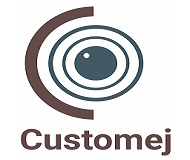IRAs are a great way to save for retirement, but there are many different types of IRAs. Some IRAs have special features that make them unique, and some allow you to invest in more types of assets than others. Before you open IRA account, you must learn the five most common types of IRA accounts and how they work:
Traditional IRA
A traditional IRA is a retirement account that you fund with pre-tax dollars. This means that you don’t pay any taxes on the money going into your account, but you do have to pay regular income taxes on any withdrawals.
Contributions can be made until the taxpayer reaches the age of 70.5 years old, although there are some requirements for contributing. For example, if you or your spouse participates in an employer-sponsored retirement plan (such as a 401(k)), then neither of you can contribute to an IRA on behalf of yourself or the other if either was covered by such a plan during 2018 and 2019; this rule applies even if one person isn’t now participating in such a plan but did participate at some point during those two years—and even if both were not covered by such plans during those two years.
Roth IRA
A Roth IRA is an individual retirement account that exempts you from paying taxes on the money you contribute. Instead, your contributions are made with after-tax dollars, and your withdrawals will be completely tax-free.
According to SoFi’s professionals, “This type of account can work if you want to grow your investment over time without paying taxes on any gains when you withdraw them.” The only catch is that you will be paying income tax on the amount that’s withdrawn if it falls outside of certain parameters, like when it’s taken before age 59 1/2 or after death (and other exceptions).
SEP IRA
A SEP IRA is a retirement plan for self-employed people. It’s an individual retirement account (IRA) that allows you to contribute more than the regular IRA limit. To qualify for a SEP IRA, you must be self-employed and have no employees besides yourself. You can set up your own SEP account with most banks or financial institutions, including traditional IRAs.
SIMPLE IRA
The Simplified Employee Pension (SEP) IRA is an individual retirement account that’s easy to set up and maintain. It’s available to anyone, including self-employed people, sole proprietors and partnerships. Here are some of the features of the SEP-IRA:
- Contributions are subject to income tax withholding at withdrawal.
- You may be able to deduct contributions from your taxable income, but not all contributions qualify for this deduction – it depends on your adjusted gross income (AGI).
- There are no age limits for contributing or receiving distributions from a SEP plan; however, if you’re younger than 59-1/2 years old when you take a distribution from a traditional IRA or Roth IRA, you will pay an additional 10% penalty on top of regular income taxes.
Boost your search rankings with high-DA Press release sites Fast approval ensures immediate SEO improvement. Quality placements drive higher visibility and quicker results.
Self-directed IRA
A self-directed IRA allows you to invest in alternative assets such as real estate, private equity and more. You can make tax-deductible contributions to a self-directed IRA as long as they meet the IRS’s requirements. With this type of IRA, you have the option of taking distributions from your account at any time for any reason without having to pay taxes on them (as long as they were made with pre-tax money).




